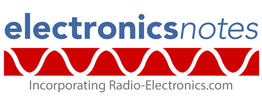Home » Component data » Diode (Schottky) data » this page
C4D10120A SiC Schottky Diode Data
Key data for the C4D10120A silicon carbide Schottky diode including key electrical parameters, performance, features, outline, package type and many other key datasheet details.
The C4D10120A is described as a 4th generation SiC Schottky diode It is a 1200V 10A device contained within a 2 pin TO220-2L package. Being a silicon carbide Schottky device it is able to withstand much higher reverse voltages when compared to standard silicon devices.
The devce also offers much lower levels of reverse current and generally improved performance.

Key details and datasheet performance parameters for the C4D10120A silicon carbide Schottky diode.
| C4D10120A silicon carbide diode datasheet parameters & data |
|
|---|---|
| Parameters | Details |
| Diode type | 1200V 10 silicon carbide Schottky diode |
| Package type | TO220-2L |
| Repetitive peak reverse voltage, VRRM | 1200V |
| Working peak reverse voltage, VRWM | 1200V |
| DC blocking voltage, VR | 1200V |
| Forward continuous current, IF | 33A @ 25°C, 10A @ 156@deg;C |
| Non-repetitive forward surge current, IFSM | 71A @ 25@°C, 59.5A @ 110°C |
| Power dissipation, PTOT | 166.5W @ 25°C, 72W @ 110°C |
| Junction temperature (°C) | 175 |
| Forward voltage VF | 1.5V typ, 1.8V max @ 10 & 25°C 2.2V typ & 3V max @ 10A & 175°C |
| Reverse leakage IR | 30typ, 250µA @1200V 25°C 55 typ, 350µA max @ 1200V & 175°C |
| Primary manufacturer | Wolfspeed (Cree) |
Outline & pinout:
Explanation of major diode parameters
| Parameter | Explanation |
|---|---|
| Repetitive peak reverse voltage, VRRM | This is the maximum value of the short period peak reverse voltage that can be sustained. |
| Working peak reverse voltage, VRWM | This is the maximum value of the continuous reverse voltage that can be applied to the diode. |
| DC blocking voltage, VR | This is the maximum reverse DC voltage that should be applied across the diode. |
| RMS reverse voltage, VR(RMS) | As many AC waveforms are quoted in RMS, this is the maximum reverse voltage that can be sustained where the voltage is expressed in terms of its RMS value. |
| Forward continuous current, IF | This is the maximum forward current that can be sustained by the diode. |
| Average rectified current, IF | This is the maximum average current value that can be handled by the diode. The parameter often states the load as this will affect the operation of the diode. |
| Non-repetitive forward surge current, IFSM | This is the maximum surge current that can be handled - it should only be present for a short time. |
| Parameter | Explanation |
|---|---|
| Power dissipation, PTOT | The maximum power dissipation that can be sustained within the device. |
| Junction temperature (°C) | This is the maximum temperature of the PN junction that can be sustained. Remember that the junction temperature can be much higher than the ambient temperature of the equipment. |
| Forward voltage VF | This parameter gives the forward voltage drop for a particular current passed through the diode. |
| Breakdown voltage VBR | This is the minimum voltage at which the diode may breakdown. If the current is not limited it will lead to the destruction of the device. |
| Leakage current IR | This is the current that flows under stated conditions when the diode is reverse biassed. |
| Diode capacitance CD | The diode capacitance, CD may also be referred to as the junction capacitance, CJ. All diodes have a certain capacitance across the PN junction. The value will be stated for a given reverse voltage. |
| Reverse recovery time | If a diode is initially driven in forward bias, and the polarity suddenly switches to reverse bias, the diode will still remain conducting for some time. The reverse recovery time is the time required for conduction to settle into the reverse bias state. |
These are the main operational amplifier parameters that have been included in our list. There are others, but these help quantify the main elements of the performance of the regulator, but are normally deemed to be less important.
Please note, that the data given is the best estimate we can give within a tabulated summary of this nature. Parameters also vary between manufacturers. Electronics Notes cannot accept any responsibility for errors, inaccuracies, etc, although we do endevaour to ensure the data is as accurate as possible.
Notes and supplementary information
• Availability & sources
The C4D10120A is available from a number of stockists and electronic component distributors many of which are given in the table below.
C4D10120A Component Distributor, Stock and Pricing
• Further details
With the performance advantages of a Silicon Carbide, SiC, Schottky Barrier diode, power electronics systems can expect to meet higher efficiency standards than Si-based solutions, while also reaching higher frequencies and power densities.
SiC diodes can be easily run in parallel paralleled to meet various application demands, without concern of thermal runaway.
Even though the cost of the silicon carbide diode will be greater than that of other devices, the levels of improved performance enable greater efficiency levels to eb achieved which in turn allows for smaller units with less cooling requirements and this enables much lower overall costs to be achieved.
 Written by Ian Poole .
Written by Ian Poole .
Experienced electronics engineer and author.
Return to Component Data menu . . .



